August 24, 2020
This commentary was originally published by EdSource. It has been reposted with the author’s permission.
California’s school systems are scrambling to adjust back-to-school plans as Covid-19 cases surge statewide. As most schools continue to navigate challenges with remote learning, state and federal funding is shifting under their feet, including funding to community colleges and four-year public universities. At a time when people without college degrees are losing their jobs in unprecedented numbers, we need to invest more — not less — in opportunities for students to complete a postsecondary degree. Philanthropy has a vital role in meeting these challenges. We must give generously today to ensure college students, their support systems and the postsecondary institutions that serve them will survive and emerge stronger.
I’ve seen the education system from many angles — as a first-generation college student, high school college counselor, academic support center director at California State University East Bay and now as an education funder. Philanthropy can’t fix this crisis alone, but it can provide flexible funding that sustains students and the organizations that serve them during this challenging time and into recovery. Our investments can spur innovation and signal to lawmakers the value in funding programs that ensure more students can access and complete a postsecondary degree, so they are resilient to future economic volatility.
Millennials and Gen Z are bearing the brunt of the pandemic’s economic chaos. They often hold jobs that are shut down due to social distancing policies. This is especially true for young people of color who, because of systemic racism and longtime inequities in education, are more likely than their white peers to hold minimum wage jobs that don’t allow remote work.
These realities illustrate why it’s important we support students at public colleges amidst this crisis and beyond. Public community colleges and four-year universities enroll 8 out of 10 California college students, many of whom are students of color or first generation. These institutions are ladders of economic mobility, providing high-quality education without requiring students to take on private school-level student loan debt. A California State University degree comes with opportunities in the knowledge-based workforce with higher wages, health insurance and employment protections, and often the ability to work remotely during a crisis — protecting individuals and their loved ones.
This April, 62% of adults with a higher education degree kept their jobs, compared to only 22% of adults with just a high school diploma. And of the 11.6 million jobs gained during recovery from the Great Recession, nearly all (99%) required postsecondary education.
Philanthropy has an obligation to support students in this moment, especially students of color who are most impacted by this crisis — deepening existing inequities. Fortunately, many are answering the call. In California, College Futures Foundation launched the California College Student Emergency Support Fund, which the Stupski Foundation and several others supported to provide hardship grants to more than 6,000 students attending community colleges and public universities. Additionally, College Futures Foundation expanded a multiyear investment to help community colleges design and implement Guided Pathways, which have helped institutions quickly identify students who need help and provide counseling and other services.
In Hawaiʻi, the Harold KL Castle Foundation is experimenting with providing funds to the University of Hawaiʻi that will forgive small amounts of student debt in an effort to encourage students to re-enroll and complete their degrees. Last fall, ECMC Foundation launched a three-year Basic Needs Initiative, granting $3.1 million to seven organizations working to close gaps in students’ basic needs. This spring, ECMC Foundation committed over $1.5 million in additional emergency aid to support students most impacted by the pandemic.
Still, many foundations are hesitating and holding back grantmaking.
I get it. In philanthropy, we don’t like to take risks. We want to ensure our investments will have the impact we have painstakingly outlined in our theories of change. But aren’t we obligated to meet our community’s needs when they need it most?
From where I sit, there is no better use of money at this time than to invest in students — to help them continue to make good long-term decisions, to bolster their support systems and to aid the public postsecondary institutions that propel students’ long-term social and economic mobility. We should unleash our giving and make funding more flexible for our educational partners, not more complicated while state budget allocations for education shrink.
The truth is: We cannot succeed without thriving public education institutions and community-based organizations that educate tomorrow’s leaders. If we let them falter, what purpose do education funders serve? Let’s take this opportunity to support the system that our students depend on.


